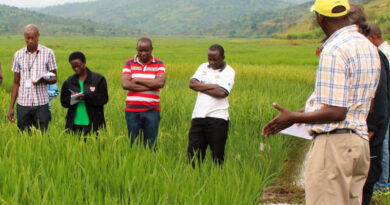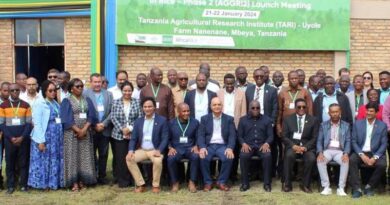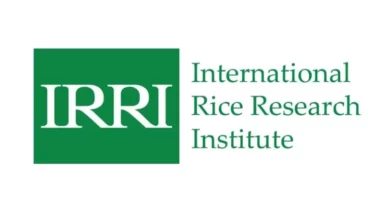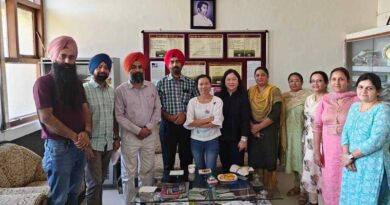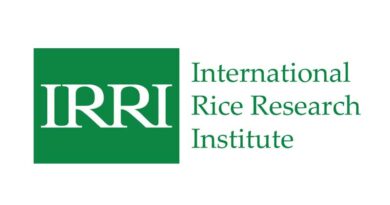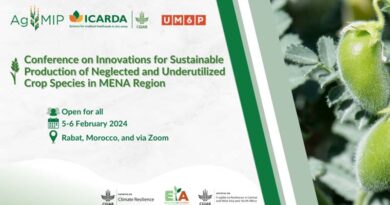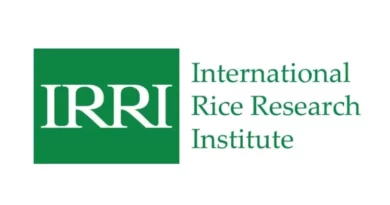Building a climate-smarter Tanzania
In a climate change scenario, a team of researchers and scholars from SUA, UCPH, IRRI, TARI, and KALRO are working to ensure East and Southern Africa’s food security through spatiotemporal mapping, identifying eligible rice lines, and developing climate-smart rice varieties.
14 May 2024, Africa: “Raining and flooding are not common during this time of the year.”, Dr. Susan Nchimbi Msolla, Professor in Plant Breeding and Genetics at the Sokoine University of Agriculture (SUA) noted as she welcomed the delegation of the Climate-smart African Rice Project Team in SUA’s Morogoro Campus. “But look, it’s raining.”, she points at the ongoing drizzle outside the venue.
“If it is raining a lot, then it is considered a wet season. Otherwise, we experience extreme heat and drought.”, elaborated IRRI Assistant Scientist Rehema Kwayu. This meant that farmers and rice researchers followed a single-season cropping style. Rehema is currently managing pilot rice breeding plots in IRRI’s office based in Dakawa, Tanzania. Because of the frequent rainfall, she said that it would be ideal for rice farmers and researchers to focus on varieties that can survive heavy rainfall and flooding. Unfortunately, this locally developed flood-tolerant variety does not exist yet in the country.
The International Monetary Fund (IMF) projected that climate change is the leading cause of the increase in the frequency and intensity of not only rainfall but also droughts in Tanzania. This has become an issue for rice farmers in Tanzania since current varieties are not yet fully capable of surviving flooding and extended submergence.
The IMF also reported that the sea level in the coastal zone of Tanzania is expected to rise as a result of global warming so on top of the heavy rainfall for the past months, crops will be more vulnerable to increased salinity in water and soil. This can greatly affect rice production as increased salt stress e decreases yields, leading to less income for farmers, and consequently, higher food prices for rice consumers. Despite achieving self-sufficiency in rice production, the demand from Tanzania’s population of over 65 million is still increasing annually, currently reaching 36.9 kilograms per capita.
Dr. Ole Pedersen of the University of Copenhagen (UCPH), Project Coordinator of the Climate-smart flood- and salt-tolerant African rice Project, stressed that these compounding abiotic stresses: flooding, salinity and sodicity, and drought due to climate change are the challenges that the project aims to address. They are currently working with a total of 8 scholars, with 2 students based at UCPH and 6 enrolled at SUA. “The main aim is to ensure that these climate-smart cultivars can survive when flooded or exposed to saline conditions so that we can sustain production and reduce the overall costs of rice production to meet the ESA region’s [rice] demand,” stated IRRI-Africa Regional Director Dr. Abdelbagi Ismail. Under this project, IRRI, TARI, SUA, and UCPH are working together to ensure the food security of not only Tanzania but the whole East and Southern African (ESA) region in a climate change scenario.
Mapping Tanzania’s flooding and soil conditions
PhD student Moh’d Mmanga Omar and MSc student Paulo Sulle worked on mapping and characterizing the land and soil conditions of several rice-growing districts in the country such as Mbarali, Iringa, Kilombero, and Lower-Rufiji. This can help farmers identify where their crops are likely to be challenged by abiotic stresses, where tolerant varieties can be tested and deployed, and how farmers can properly manage their crops to minimize the impacts of these stresses. These flooding and salinity/-sodicity mapping activities, later on, helped TARI outline and implement mitigation strategies where they deployed early warning and flood danger notices to local farmers. Through this, rice farmers can make informed decisions as they manage their cropping calendars.
Identifying suitable rice lines for a climate change scenario
Over 600 rice lines for flooding and salinity tolerance, and anaerobic germination were screened to identify new sources of tolerance for use in breeding. MSc scholars Kefrine Lutambi and Nafeti Titus Mheni focused on screening for salinity tolerance. Nafeti evaluated 346 Oryza glaberrima (African rice) accessions. On the other hand, Kefrine screened 206 African landraces, and out of this, K5 from Uganda and Intsindagira bigega from Rwanda, were identified to have the Saltol gene. The gene, which gives rice plants the ability to tolerate increased soil salinity, has been incorporated into many popular varieties in Asia. Interestingly, Ms. Lutambi also identified 16 other varieties that exhibited salinity tolerance despite not having the Saltol gene. MSc scholar Lupakisyo Mwakyusa screened 206 accessions for anaerobic germination and identified a few tolerant genotypes that are being further characterized.
Emulating real-time weather and soil conditions
To produce rice varieties with tolerance to certain abiotic stresses, rice lines must be raised in similar environmental conditions. The team collaborated on developing a 70 by 25 m2 submergence facility which is a one-of-its-kind in the ESA region, instead of sending lines for evaluation in Asia. Rice scientists can now access this pond by coordinating with SUA, as the regional center for abiotic stresses. With this pond, researchers can screen thousands of rice accessions in a controlled manner and in a short period of time. PhD student Victoria Bulegeya is researching flood-tolerance using Tanzanian rice landraces since up to this date, there are no varieties developed and released in Tanzania with such traits.
On the other hand, Fitta Sillo is working on increasing the seed supply of new rice varieties and landraces collected from neighboring regions such as Zanzibar, as well as material received from IRRI. “We are currently working on the seed multiplication of 349 lines of Oryza glaberrima which we obtained from the AfricaRice Centre.” shared Fitta. The screenhouse is helping the scholars of the Climate-smart African rice and Japan’s Ministry of Agriculture, Forestry and Fisheries (MAFF) projects conduct their screening activities for salinity tolerance under hydroponics and seed germination under anaerobic conditions. It has enough working space to accommodate a large number of germplasm for screening and since it has a shelter and is furnished with fans, it allows them to conduct their experiments under conditions similar to that of natural fields.
These innovations altogether aim to support and sustain Tanzania’s rice sector development, where the country is already self-sufficient in rice, and with potential for export to neighboring countries. TARI Director General Thomas Bwana emphasized that these research activities and upcoming trainings would strengthen farmers’ skills and capacities in managing their respective rice lands, which can ultimately help contribute to the region’s food security.
In the case of Dakawa, mapping soil conditions can open new research opportunities. Soil properties seem to vary in different locations in the same county ranging from loam to sand and a mixture of both. “The soil is good, but water is still insufficient.”, Rehema shared, further explaining that this makes them dependent on the nearby river for supply especially during drought season.
While flooding has been more prevalent in recent months in some regions of Tanzania, this inconsistently oversupplied rainwater makes it riskier for farmers to cultivate rice that relies on the rotation of the seasons for water supply. Improved rice varieties with verified tolerance to climate vulnerabilities as well as climate-smart agronomic practices can assure farmers that they will still have better yield regardless of the condition of the weather.
(For Latest Agriculture News & Updates, follow Krishak Jagat on Google News)


